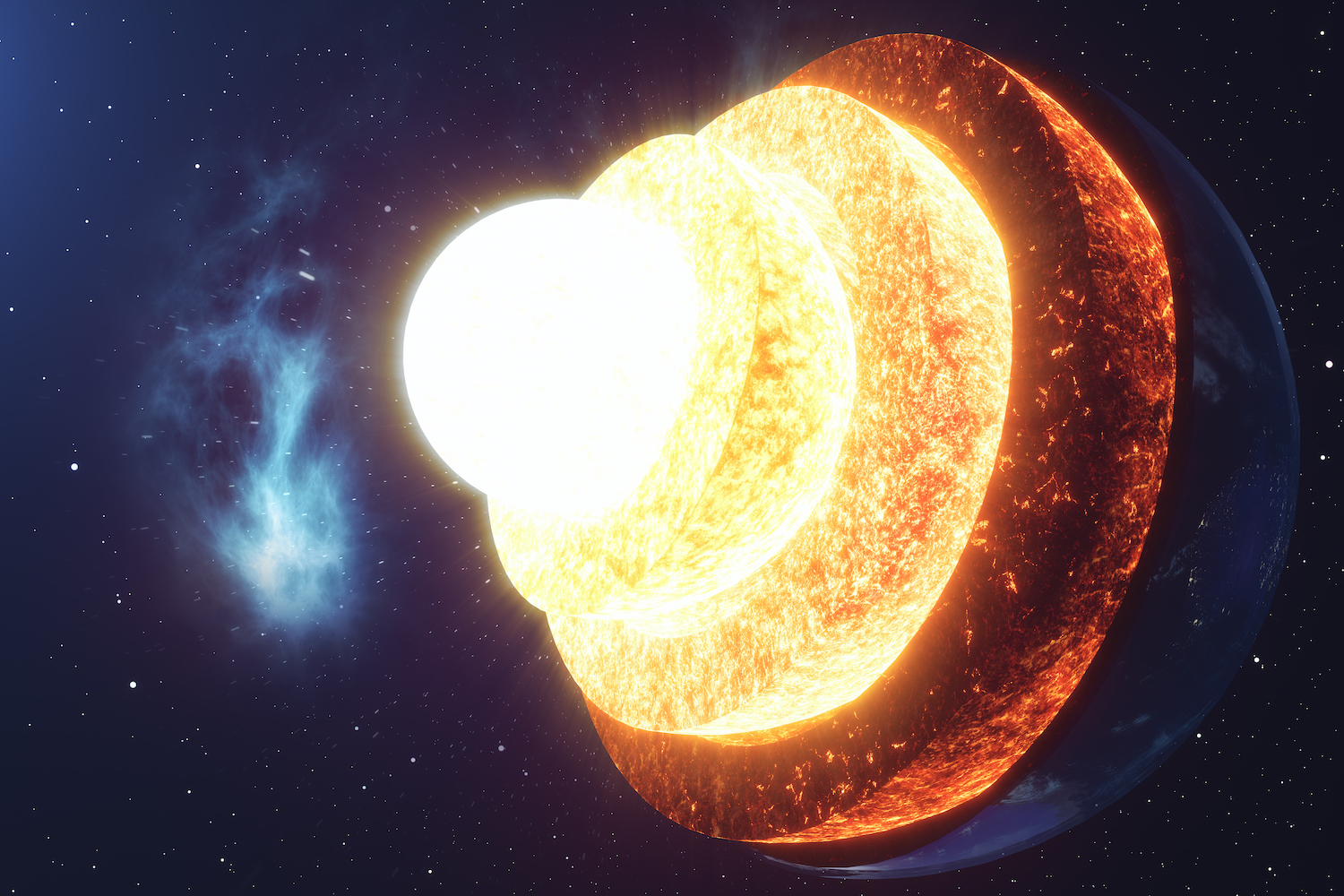Geologists are trying to figure out what’s going on far below our feet, and it could help them understand the magnetic field that keeps life going far above our heads.
As the inner parts of the Earth cool and harden, the solid iron inner core at the center of our planet grows by about a millimeter each year. A new study shows that one side seems to be growing faster than the other, but scientists don’t know why.

This probably started between 1.5 billion and 500 million years ago, when the inner core was made. After billions of years of cooling, the fiery center of the Earth had finally lost enough heat to start the process of crystallization, which is still going on today. Now, as the molten iron in the outer core loses heat, it solidifies into a new layer in the inner core.
The center of this very active hemisphere is 1,800 miles (2,896 kilometers) under Indonesia’s Banda Sea. About 60 percent more iron crystals form at that point on the inner core than on the other side of the world.
Today, the inner core has a diameter of about 750 miles (1,207 km) and a temperature of over 9,000 degrees Fahrenheit (4,982 degrees Celsius). Even though it has grown unevenly for a long time, it hasn’t changed shape. Gravity is always shaping it, putting the extra in the east and keeping it in a sphere shape. This growth is not only a fascinating puzzle, but it may also help power the Earth’s magnetic field (and enable our survival).
Cooling for the planets
For being such a small and faraway part of the huge onion we call home, the inner core has a huge effect on us who live on the outside. Daniel Frost, a geophysicist at the University of California, Berkeley, and the lead author of the new study, jokes that he “always has to defend the importance of the inner core.” In fact, we owe our lives to it. As it cools, it gives off heat, which makes the outer core move. In the end, the geodynamo, which is the spinning liquid iron, makes the magnetic field that protects life on Earth from dangerous solar winds.

In the same way, the top layers affect the middle. Frost says, “Everything is affected by what’s above it.” The outer core surrounds the inner core, the mantle surrounds the outer core, and the crust surrounds the mantle. So, for the inner core to grow, it must send its heat, some of which is left over from when the Earth was made and some of which comes from radioactive elements that are breaking down, to each new layer. Then, each layer needs to be able to absorb the heat.
That could be one reason why the inner core cools at different rates. A major subduction zone is where Indonesia is growing the most. There, cool pieces of tectonic plates fall into the hot mantle and cool it down. Frost says, “It’s kind of like putting ice cubes in.” This difference in temperature lets the deeper layers lose heat, which makes the inner core solid.
He thinks that even though these “ice cubes” are small, they might be enough to tip the scale. “There’s a fine line here,” he says. “I don’t think it takes much to make a change like this,” she said. But this may be too simple an explanation: It’s not clear if heat from the Earth’s core spreads out in a vertical line. The sinking Indonesian crust could just as easily cool the core that is under, say, China or Saudi Arabia as it could cool the core that is under Indonesia.
The highway for earthquakes
For now, we don’t know what causes the asymmetry itself, but it does help explain why the iron crystals in Earth’s inner core line up along the North-South axis of its rotation. (No one has seen the structure of the core directly, but seismologists have seen that earthquakes move faster through the core between the North and South Poles than across the equator.) If everything else is the same, the crystals should be in different places.

The researchers at Berkeley think the answer lies in how the core is formed. Based on their computer model, as gravity moves the crystals around, it puts them into a sort of “flow.” Frost says, “Think about throwing sticks into a river.” “If the river is moving, the sticks will move along with it.” In the same way, because the inner core is moving, the crystals line up with it and form an orderly lattice that acts like a highway for fast-moving tremors.
More research is needed to figure out what this difference and the magnetic field have to do with each other. But since this planetary armor is so important to our lives, it’s worth looking into the processes that make it work. Scientists have known for a long time that the magnetic field changes direction every so often (it’s about time), and that when it does, it temporarily gets weaker. But it’s not clear why. Frost says, “The question is always, ‘Is this related to the reversal of the magnetic field?’” when it comes to new discoveries about the Earth’s core.